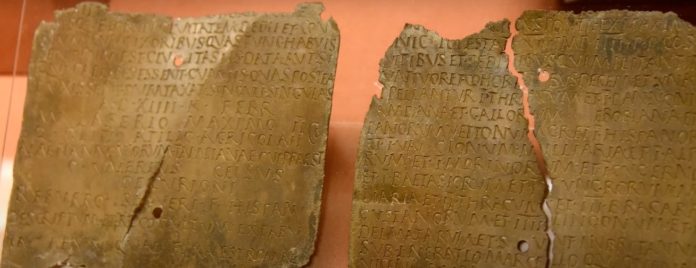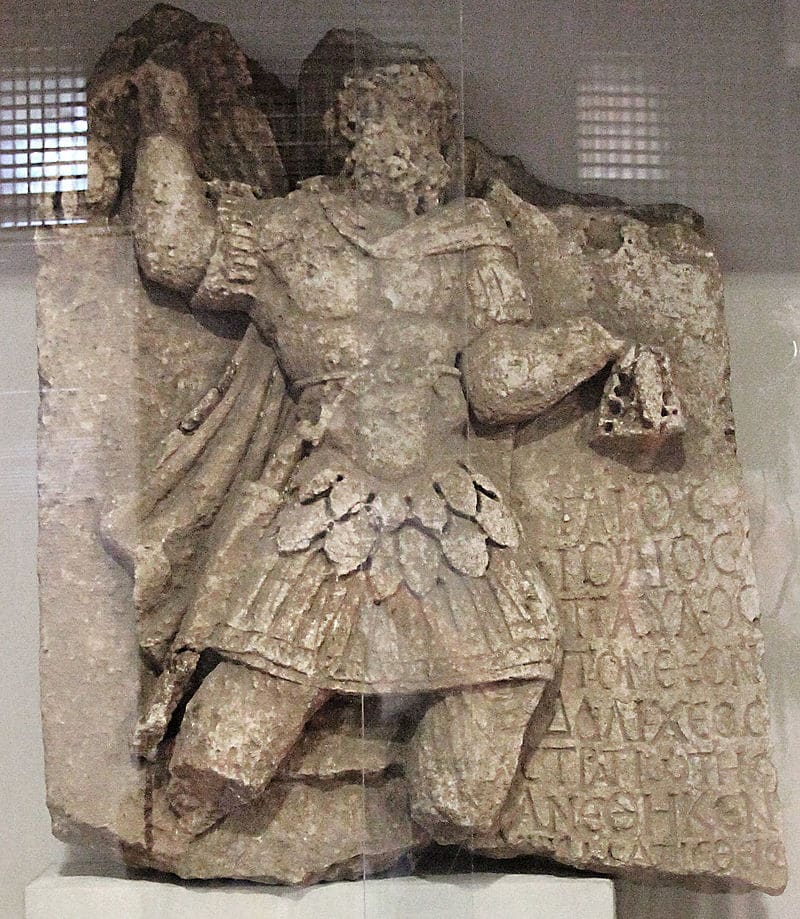Information
Roman-era Bronze Diploma Found in Ancient Greek City of Perrhe
A Roman-era bronze diploma earned by a graduate of a military school in the Ancient Greek city of Perrhe was unearthed recently by archaeologists. At 1,898 years of age, it is a unique find from what was once the Commagene Kingdom, which was a buffer state between Armenia, Parthia, Syria and Rome.
Renewed excavations in the city began in 2001, with archaeologists uncovering a Roman fountain, water ducts and a range of architectural structures during 2021.
Recently, a military diploma in the form of a bronze plaque was unearthed there, as reported in the Daily Sabah.
After careful examination, researchers came to the conclusion that the bronze certificate was nearly 2,000 years old, dating back to Roman times in Asia Minor. The writing on it states that the soldier had completed 20 years of service in the army; he was thereby entitled to marry and become a citizen of the region.
Bronze diploma found on last day of excavations of 2021 season
Mehmet Alkan, the director of the Adıyaman Museum, told reporters on Monday that his team had unearthed the military diploma on May 24, the last day of their excavations this past year. Professor Mustafa Hamdi Sayar, an expert in ancient history and languages, translated the text, determining that the bronze sheet was in fact a type of military diploma.
Alkan noted that the Latin inscription “includes information about Calcilius Antiquus, who served in the military during the reign of Roman Emperor Hadrian. This person in question was given an award after serving in the military for 20 years. He was given the right to marry and gained Roman citizenship.”
Perrhe (Ancient Greek: Πέρρη) was an ancient city in the kingdom of Commagene that was also called “Antiochia on the Taurus.” The remains of the city are located in the modern suburb of Örenli (which was previously the village of Pirin or Pirun) in the Turkish city of Adıyaman in the province of the same name.
Perrhe also known as “Antiochia on the Taurus”
According to the 1925 excavations of the Swiss anthropologist Eugène Pittard, Pirin was already inhabited by Paleolithic times. In antiquity, Perrhe was one of the four core cities of the kingdom of Commagene mentioned in inscriptions, along with Samosata, Marash and Doliche.
Perrhe lay on the route from the capital of Samosata over the Taurus mountains to Melitene. Because of its spring, which was already famous in ancient times and which now issues from a Roman fountain in the middle of the town, Perrhe was an important staging post for travelers who were headed over the mountains.
Under Antiochus IV, who ruled the region from 38 to 72 AD, Perrhe was refounded as the polis of “Antiochia on the Taurus.” The spectacular votive relief of Jupiter Dolichenus which was found in the city’s necropolis in 2001 derives from this period of its history.
Spectacular necropolis, Roman-era fountain, Byzantine basilica
A floor mosaic found in the city indicates the importance of the place during Christian times. Under the Byzantine Empire, Perrhe was a bishopric.
Perrhe is located just four kilometers from the city of Adıyaman. Its ancient necropolis stretched along the side of the road for almost an entire kilometer.
The vast necropolis contains free-standing sarcophagi and simple vaulted burial niches, as well as catacombs, which often contain several rooms, with vaulted niches dug out of the cliff face, irregularly separated by pilasters.
Most of the graves are grouped together in sections accessed by stairs carved into the cliff face at various points. Some of the tombs have remains of reliefs still surviving in front of the entranceways, but there is no other decoration.
In the center of the village is the Roman-era water fountain with a five-meter (16 foot) wide stone vault covering a water channel. Remains of the city walls also survive today.
Otto Puchstein and Karl Sester visited the town in 1882, as Puchstein recorded in the volume “Reisen in Kleinasien und Nordsyrien” (“Travels in Asia Minor and North Syria.)” In 1925, Eugène Pittard discovered a Palaeolithic settlement at Pirin, which he investigated further in the following years.
In 1945, İsmail Kılıç Kökten continued these investigations, discovering many new objects. Friedrich Karl Dörner and Rudolf Naumann carried out investigations of the village of Pirin and the necropolis in 1938 in the course of their expedition to Commagene.
They found only a few grave goods and a recently-exposed floor mosaic, of which a single section, showing of an abstract pattern and an amphora with handles, survived. Hasan Candemir and Jörg Wagner in 1975 were able to determine that the floor had belonged to a basilica with a 10-meter (33-foot) wide nave and two 3-meter wide side aisles; they dated the mosaic to the Byzantine era, sometime in the fifth century AD.
Dörner and Naumann also documented new sections of the necropolis. Excavations undertaken there by the Adıyaman Archaeological Museum under the leadership of the museum director Fehmi Erarslan brought to light the spectacular relief of Jupiter Dolichenus.
The Kingdom of Commagene (Ancient Greek: Βασίλειον τῆς Kομμαγηνῆς) was an ancient Greco-Iranian kingdom ruled by a Hellenized branch of the Iranian Orontid dynasty that had ruled over Armenia. The kingdom was located in and around the ancient city of Samosata, which served as its capital. The Iron Age name of Samosata, “Kummuh,” probably gives its name to Commagene.
Commagene has been characterized as a “buffer state” between Armenia, Parthia, Syria, and Rome; culturally, it was correspondingly mixed. The territory of Commagene corresponded roughly to the modern Turkish provinces of Adıyaman and northern Antep.
Little is known of the region of Commagene prior to the beginning of the 2nd century BC. However, it seems that, from what little evidence remains, Commagene formed part of a larger state that also included the Kingdom of Sophene. This situation lasted until circa 163 BC, when the local satrap, Ptolemaeus of Commagene, established himself as an independent ruler following the death of the Seleucid king, Antiochus IV Epiphanes.
Category: English
News
Information
Key words:



